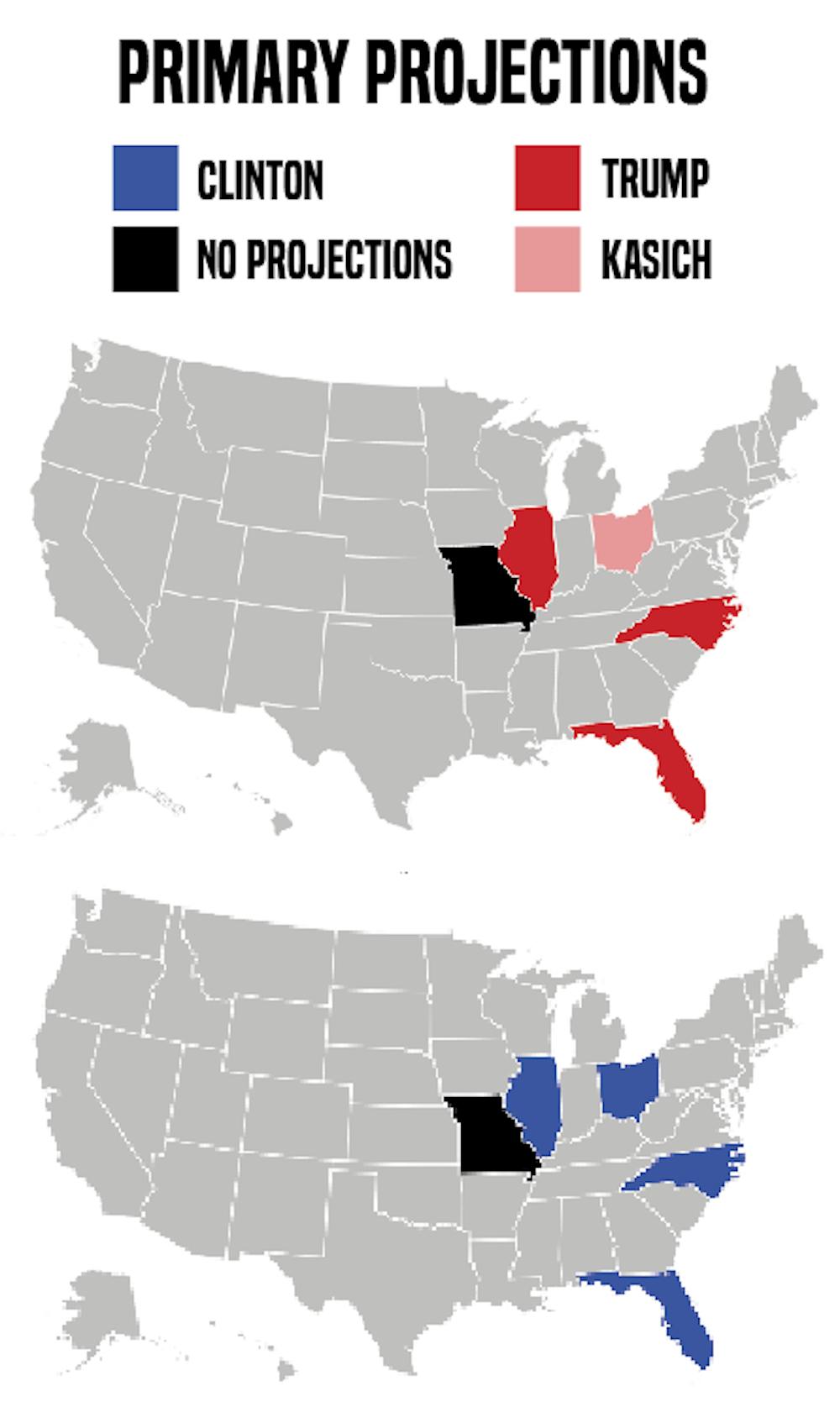North Carolina isn’t the only state holding its primary March 15. On this day, Ohio, Florida, Illinois and Missouri will also be holding their primaries.
The importance of winning these states varies depending on the candidate.
Ohio Gov. John Kasich is aiming to win his home state as a last resort for staying in the race. He currently has a 44 percent chance of winning, according to Nate Silver’s FiveThirtyEight poll predictions.
Ohio’s Republican primary election is a winner-take-all system. Under this system, the candidate with the greatest percentage of popular votes gets all of Ohio’s 66 Republican delegates. If Kasich does not beat businessman Donald Trump, Sen. Ted Cruz (R-Texas) or Sen. Marco Rubio (R-Fla.) for the Ohio Republican Primary, another candidate will automatically win over the entire state.
While Ohio is most important for Kasich, Florida is most important for Rubio. Silver’s data shows Rubio is not as likely to win his home state of Florida. Trump is 68 percent likely to win the Sunshine State, while Rubio is just 31 percent likely to win.
Rubio faces the same winner-take-all system as Kasich does in Ohio. But Florida has 99 Republican delegates, 33 more than Ohio. Florida’s closed primary, which closes off voting to those who do not register as Republicans at least one month before the election, is another factor playing against Rubio’s slim chances of winning his state.
Trump is the first candidate to win more than 10 states, which hurt Kasich and Rubio. If they can’t even win over their home states, where they’re more likely to get support, they have slim chances of ever being elected President.
Any registered voter in Florida or Ohio who is against Trump should participate in this year’s primaries. If Trump continues his streak of holding a slightly greater percentage of support in comparison to his competitors, he could win these states with the winner-take-all system. By winning such large states, Trump could virtually secure his nomination.
Trump is the leading candidate in polls for Missouri and Illinois as well. In these primaries, there is proportional representation, which means the number of delegates voting for a candidate will be allocated in proportion to their percentage of popular votes. Both states have open primaries, meaning any registered voter can vote in the Democratic or Republican primary.
On the Democratic side of this election year, former Secretary of State Hillary Clinton has mainly dominated the South while Sen. Bernie Sanders (I-Vt.) has won over Northern states.
Clinton is projected to have a 99 percent chance of winning the Illinois and Florida primaries and a 93 percent chance of winning Ohio, according to Silver’s research.
Clinton has relied heavily on minority voters in the South, while Sanders has primarily appealed to the white demographic in the Midwest. Clinton earned 73.5 percent of votes in South Carolina, a state with a high African-American population, while Sanders earned 60.4 percent of votes in New Hampshire, a state with a 94 percent Caucasian population.
All of the Democratic primaries are proportionally represented, with much larger pools of delegates than the Republican primaries. Because of Clinton’s strong leads in states holding primaries March 15 and the lack of opportunity for Sanders to secure a significant delegate shift, Sanders will likely look to recover from these early losses.
March 15 is quickly approaching and all out-of-state students will have to absentee vote well before this time.
For the numerous students who voice concerns about the current field of Republican and Democratic candidates, the March 15 primaries have the potential to effectively predict who will serve as the next president.


